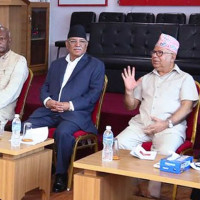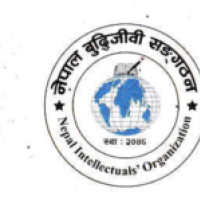- Friday, 22 August 2025
How Trump’s Tariffs Hit Nepal's Economy
Trumpism has become one of the most ridiculed yet defining political phenomena of our time, with the most powerful man in the world, Donald Trump, embodying the non-traditional political philosophy and approach that he and his supporters champion. The term “Trumpism” emerged during Trump’s 2016 presidential campaign. Sociologists and political analysts say Trump’s rhetoric is rooted in a populist method that offers nationalistic answers to political, economic, and social problems. His right-wing populist policies, including immigration restrictionism, trade protectionism, isolationism, and opposition to entitlement reform, form the core of Trumpism. This term is now often used to describe the direct and sometimes outrageous or idiosyncratic statements made by the U.S. President.
At present, such policies — especially those introduced in the name of making the U.S. safe and boosting economic growth — are having far-reaching effects on countries across the world, both developed and developing. Alongside deportation and tighter migration controls, the Trump administration has increased taxes on various items, including remittances — the money that migrants send home to their families. Remittances form one of the main pillars supporting Nepal’s economy. Even the current 1 per cent hike in remittance tax imposed by the U.S. translates into a large loss for Nepalis working there, who send money home not only to support their families but also to contribute indirectly to national development.
Remittance flow
According to the Overseas Development Institute (ODI), global remittance flows are three to four times the total amount of foreign aid. In 2023, remittances to the Global South reached an estimated USD 656 billion, while foreign aid totalled around USD 224 billion. Mexico has been hit the hardest by the U.S. remittance tax increase, but countries like Nepal will also feel the impact. Beyond the loss of income, Nepali migrants deported from the U.S. and families settled there are now considering returning home. While this return of highly educated and hardworking citizens could, in the long run, benefit Nepal — bringing in skills and knowledge that might help them set up livelihoods here —it will nevertheless have short-term economic repercussions.
Nepal also depends heavily on imports from India. As of August 27, 2025, the Trump administration has imposed a 50 per cent tariff on Indian imports, a sharp increase from the previous 25 per cent. The justification, according to the U.S. administration, is India’s continued purchase of Russian oil. Analyses by The Wall Street Journal and The Times of India suggest this could reduce India’s GDP growth by 0.3 to 0.6 percentage points, with sectors like textiles, pharmaceuticals, and machinery — the very products that Nepal imports most from India — being hit the hardest. The ripple effect on Nepal’s economy is therefore inevitable.
When hearing news about U.S. taxation and remittance policies, it might seem that Nepal would remain unaffected due to limited direct trade between the two countries. However, even small percentage changes — whether in remittance fees or tariffs — can have a significant impact on Nepal when tied to the U.S. dollar. Development institutions like ODI warn that even a minor U.S. remittance tax hike can reduce flows and disproportionately harm low-income countries. Nepal certainly falls into that category. According to Trading Economics, U.S. imports from Nepal totalled USD 128.52 million in 2024 — a small figure compared to imports from India or China. However, this could be significant for Nepal’s economy.
Also, any U.S. tax hikes affecting Nepal’s two giant neighbours will have indirect but significant consequences for Nepal. It is therefore crucial for the Nepal government to start preparing for the global and domestic impact of Trump’s policies. This means calculating the potential loss in remittances and identifying alternative sources of foreign exchange. It also requires acknowledging that current U.S. migration and remittance policies are unpopular among Nepalis in America and may trigger the return of many migrants. This return should be seen as an opportunity, prompting policies that help these individuals start their own businesses or create other livelihood activities that can generate employment for others as well.
Domestic capacity
The reduction of development aid, particularly from USAID, has already hurt sectors such as health and education for women, children, and marginalised communities. But this challenge should catalyse the Nepali private sector and government to improve and strengthen domestic systems and capacities. Developing policies and mobilising resources to enhance the socio-economic status of all seven provinces should now be the priority. Nepal’s youth population is one of its greatest assets. If even a small number of skilled Nepalis return from abroad and establish enterprises in each province, they could become role models, both for inspiring and employing local youth.
Recently, after the release of the 12th-grade examination results, the Nepali media reported that the majority of graduates were planning to go abroad for higher studies. This is the moment to curb the outflow of students, who would otherwise spend large sums in foreign currency. Strengthening Nepal’s educational institutions and creating local opportunities could help stop this exodus. The current U.S. migration policies offer a cautionary example for these young people. Rather than spending large amounts abroad and risking deportation, they could invest the same amount in Nepal, starting small businesses while pursuing further studies locally. This approach would keep their families’ money in the country, create jobs, and protect them from the hardships of forced return.
(Sharma is a senior journalist and women’s rights advocate. namrata1964@yahoo.com or on X @NamrataSharmaP)
















